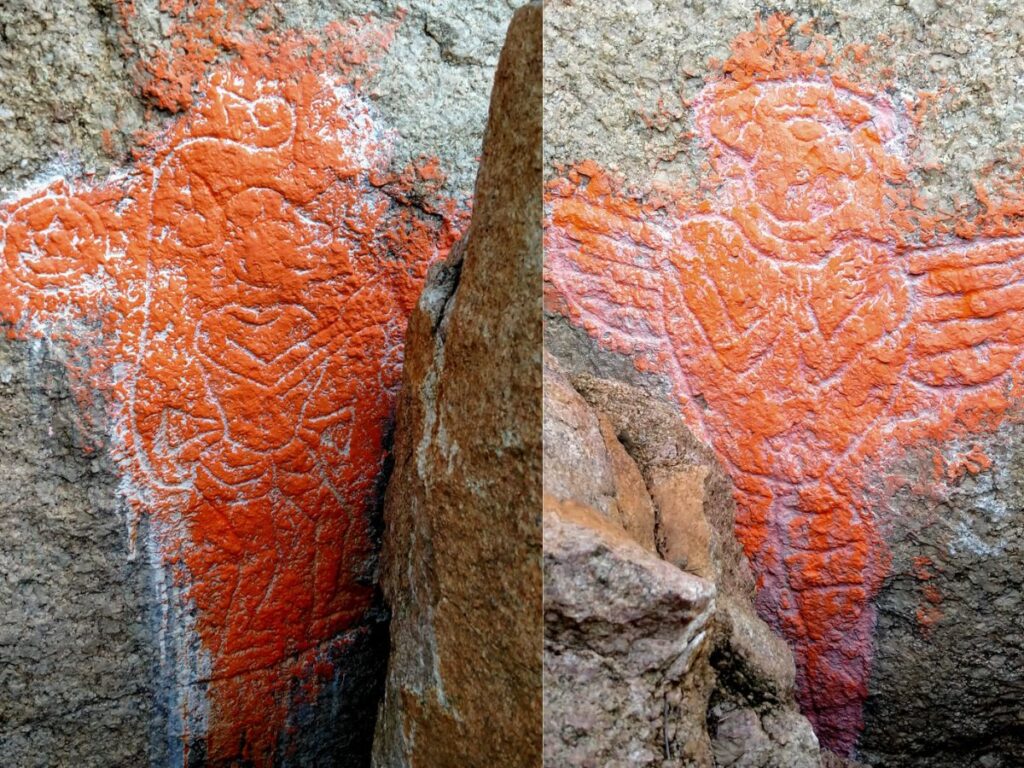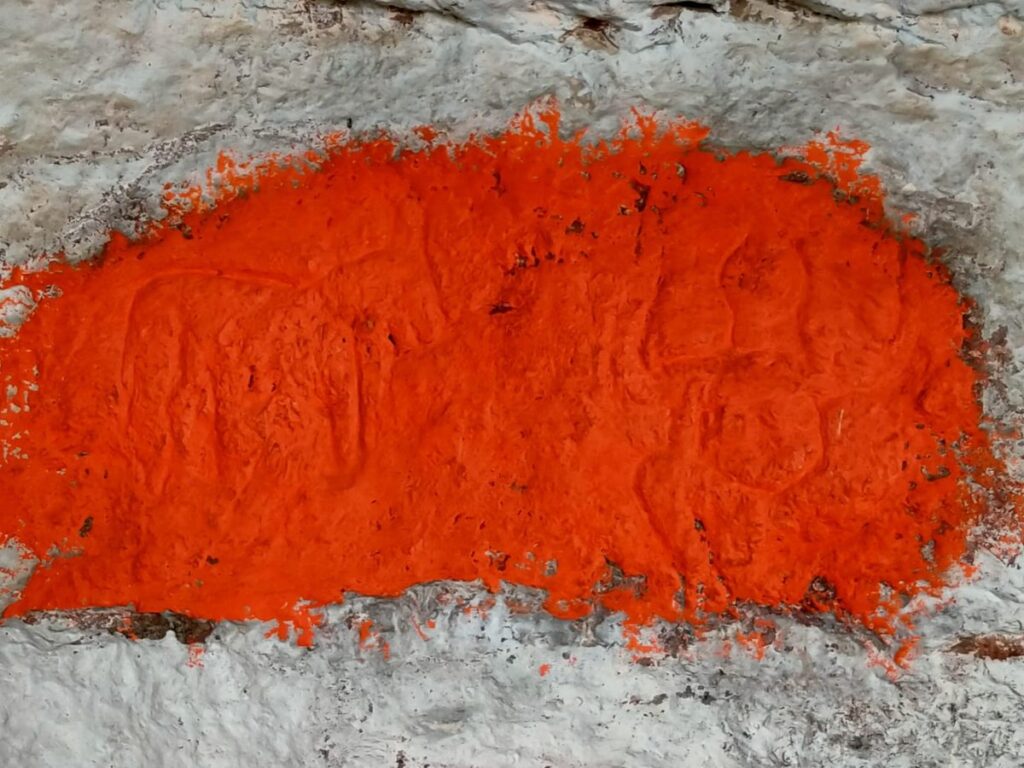
Hyderabad: Rare ‘petroglyphs’ from the era of Recharla Padmanayakas (14th century) were found inside the rock shelters of Ananthagiri hillock located in Ramnunthala village of Amangal mandal in Rangareddy district.
Dr Dyavanapalli Satyanarayana, joint director in tribal welfare department, who is an eminent historian, found the petroglyphs (carvings or inscriptions on rocks) inside the rock shelters/caves located close to the Srisailam highway on the outskirts of Hyderabad.
The east-facing rock shelter that looked like a snake’s hood contained numerous prehistoric paintings, and medieval petroglyphs. However, the local Lambada tribals who started worshipping the petroglyphs as their gods, white-washed the prehistoric ochre colour paintings, and applied ochre colour (jaaju) on the petroglyphs. Presently, only three petroglyphs appear on the surface of the main cave.
One of the walls of the boulders contained two figures – a horse and Lord Ganesha in ‘ardha sukhasana’ pose. The Ganesha appears like the ‘mother goddess’ in pose, the reason why some locals call it goddess Bhadrakali, the consort of Lord Veerabhadra, who has been residing in the nearby ‘Ayyasagar caves.’

Another boulder had the petroglyph of a hooded-snake in an erect position. A boulder situated in the south-east side of the main rock shelter contained two petroglyphs of two-feet-long each. One of them is of Lord Hanuman and the other one is of Garuda / Garutmantha (celestial Eagle). Each of them have been depicted in standing positions, with folded hands facing the main rock shelter.
There is a cavern in the south-western corner of the main rock shelter, where a Guru has been depicted. The three-feet-long and two-feet-wide male figure is seen in a ‘padmaasana’ pose. The Guru has long and braided hear arranged in layers on his head. There are two holes in each side of the figure, conveying that the devotees of the time inserted sticks in the holes to place garlands around the neck of the Guru’s figure (petroglyph).

According to Satyanarayana, the petroglyphs belonged to the later part of 14th century, and have been the work of the Recharla Padmanayakas, who ruled Telangana from Rachakonda after the Kakatiyas.
“When the Padmanayakas occupied Kanchi in the 14th century, Singabhupala-II had invited the famous Vaishnava teacher ‘Vedanta Desika’ to his kingdom. But the latter sent his son Nainacharya. Thereafter, the Padmanayakas started constructing and worshipping Vaishnava temples of Lord Rama, Narasimha, Gopala Krishna, Vishnu, in addition to Guru Vedanta Desika / Nainacharya. In the precincts of the temples, sacred caves and forts constructed by Padmanayakas, we can see the figures or sculptures of Lord Hanuman, Garuda (celestial eagle), Ganesha, Shivalinga and serpent,” he told Siasat.com.

He claims that the tradition of installing such deities was initiated by the Padmanayakas in Amangal area itself, as the Padmanayakas called themselves “Anumanaganti Puravaraadheesvara” (Lords of Amangal). Satyanarayana claims that Padmanayakas hailed from Amangal which is just 4 km away from this rock art site.
“As these are rare petroglyphs of the 14th century’s history of Telangana region, they need to be protected by the Heritage Telangana department before they are vandalised,” he urged.



